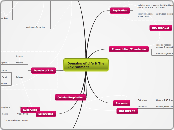jonka Austin Wakefield 3 vuotta sitten
289
Organigram
The concept of a universal common ancestor highlights the shared origins of all life forms, rooted in DNA and characterized by specific structural bonds. Eukaryotes are distinguished by membrane-bound organelles and a nucleus, and within this domain, various groups exhibit unique features.









